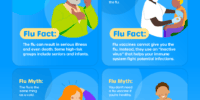Comparing Chemotherapy And Radiation Therapy: Approaches And Side Effects
Chemotherapy and radiation therapy are two commonly used treatment approaches in cancer care. They work by targeting and destroying cancer cells, but they differ in their mechanisms and side effects.
Chemotherapy involves the administration of drugs that circulate throughout the body to reach cancer cells, while radiation therapy uses high-energy rays to directly target tumor sites.
Both therapies can cause side effects due to their non-specific nature, affecting normal cells along with cancerous ones. Chemotherapy can lead to nausea, hair loss, fatigue, and weakened immune function among others. Radiation therapy may result in skin changes, fatigue, and damage to nearby organs.
When comparing the effectiveness of these treatments for different types of cancer, factors such as tumor location and stage must be considered. Additionally, combination therapy involving both chemotherapy and radiation may be employed for certain cases.
By personalizing treatment plans based on individual patient needs and preferences, healthcare professionals can optimize outcomes while minimizing side effects. Understanding the similarities and differences between chemotherapy and radiation therapy is essential in making informed decisions regarding cancer treatment options.
Key Takeaways
- Chemotherapy and radiation therapy are commonly used treatments in cancer care.
- Both therapies can cause side effects such as nausea, hair loss, fatigue, and skin changes.
- Tumor location and stage must be considered when comparing the effectiveness of these treatments.
- Combination therapy involving both chemotherapy and radiation may be used in certain cases.
How Chemotherapy Works
Chemotherapy is a systemic treatment that utilizes cytotoxic drugs to target and destroy rapidly dividing cancer cells throughout the body, aiming to inhibit their ability to grow and spread.
It works by interfering with the cell division process, either by directly damaging the DNA or disrupting other essential cellular processes.
Unlike localized treatments such as surgery or radiation therapy, chemotherapy can reach cancer cells in different parts of the body. This makes it effective for treating cancers that have spread or are difficult to surgically remove.
Chemotherapy can be administered through various routes, including intravenously, orally, or topically.
However, its effectiveness is not limited to cancer cells alone; it can also affect healthy cells that divide rapidly, leading to side effects such as hair loss, nausea, fatigue, and an increased risk of infection.
Nonetheless, advances in supportive care have improved patient tolerance and minimized these adverse effects.
How Radiation Therapy Works
Radiation therapy involves the use of high-energy radiation to target and destroy cancer cells within the body. It is a localized treatment that aims to kill cancer cells while minimizing damage to healthy tissues. This therapy works by damaging the DNA of cancer cells, which prevents them from dividing and growing further. The radiation can be administered externally or internally, depending on the type and location of the tumor.
External beam radiation therapy uses a machine that directs radiation at specific areas of the body, while internal radiation therapy involves placing radioactive materials directly into or near the tumor site.
Common side effects of radiation therapy include fatigue, skin changes in the treated area, hair loss in the targeted region, and irritation or inflammation in surrounding tissues.
Differences in Administration Methods
One significant distinction lies in the various methods of administration utilized for treating cancer. Both chemotherapy and radiation therapy can be administered through different approaches, depending on the type and location of the cancer. The table below provides an overview of the different administration methods for these treatments.
| Administration Method | Chemotherapy | Radiation Therapy |
|---|---|---|
| Oral | Some chemotherapy drugs can be taken orally as pills | Not applicable |
| Intravenous | Most common method where drugs are injected into a vein | Not applicable |
| Topical | Medication applied to the skin as creams or ointments | Used for certain skin cancers |
| Intra-arterial | Drugs delivered directly into arteries supplying tumors | Not applicable |
| Intrathecal | Drugs injected into the spinal canal | Not applicable |
These different administration methods allow healthcare professionals to tailor treatment plans based on individual patients’ needs and characteristics. It is important to note that not all methods may be suitable or effective for every type of cancer, and decisions regarding administration should always be made by medical experts in consultation with patients.
Side Effects of Chemotherapy
A common experience for patients undergoing cancer treatment is the physical and emotional toll that can result from the powerful medications used in their care. Chemotherapy, a widely used treatment modality, is known to have various side effects. These adverse effects can affect different parts of the body and vary in severity depending on the specific drugs used and individual patient characteristics.
Gastrointestinal side effects are among the most common with chemotherapy, including nausea, vomiting, and diarrhea. Patients may also experience fatigue, which can severely impact their quality of life. Additionally, chemotherapy often causes hair loss, leading to significant psychological distress.
Furthermore, hematologic side effects are frequently observed with chemotherapy. This includes a decrease in red blood cells leading to anemia and increased susceptibility to infections due to low white blood cell counts.
Given these potential side effects, healthcare providers must carefully monitor patients undergoing chemotherapy and provide appropriate supportive care interventions to minimize discomfort and improve overall well-being during treatment.
Side Effects of Radiation Therapy
The impact of radiation therapy on the human body can manifest in a range of physical and emotional symptoms that can significantly affect patients’ well-being. The most common side effects include fatigue, skin changes, and hair loss in the treated area. Fatigue is often experienced by patients undergoing radiation therapy, causing a sense of extreme tiredness that can limit their daily activities. Skin changes such as redness, itching, and dryness are also common due to the radiation’s effect on the skin cells. Additionally, hair loss is another distressing side effect experienced by individuals whose treatment involves irradiating areas with hair follicles. These side effects can have a profound emotional impact on patients, affecting their self-esteem and overall quality of life.
| Physical Symptoms | Emotional Symptoms | Coping Mechanisms |
|---|---|---|
| Fatigue | Anxiety | Support groups |
| Skin changes | Depression | Counseling |
| Hair loss | Fear | Relaxation |
| Overall quality of life can be improved by managing physical symptoms such as fatigue, skin changes, and hair loss. Additionally, addressing emotional symptoms like anxiety, depression, and fear through support groups, counseling, and relaxation techniques can greatly enhance well-being. |
Comparing Effectiveness in Treating Different Types of Cancer
In examining the efficacy of various treatment modalities for different types of cancer, it is important to consider how their respective impacts on tumor growth and patient survival rates differ.
Both chemotherapy and radiation therapy have shown effectiveness in treating certain types of cancer, but their specific outcomes may vary depending on the cancer type being treated.
Some studies have suggested that radiation therapy may be more effective than chemotherapy in treating certain localized cancers, such as early-stage breast or prostate cancer. However, chemotherapy has shown better results in treating systemic cancers, such as leukemia or lymphoma.
It is crucial to assess the specific characteristics of each type of cancer and tailor the treatment approach accordingly to optimize patient outcomes.
Further research is needed to fully understand the comparative effectiveness of these treatments across different types of cancer.
Considering Combination Therapy
Combination therapy, incorporating multiple treatment modalities, has emerged as a promising approach in the field of oncology. By utilizing different therapeutic agents or techniques, combination therapy aims to enhance treatment effectiveness and overcome resistance mechanisms that often arise with single-modality treatments.
When considering cancer treatment options, it is important to evaluate the potential benefits of combining chemotherapy and radiation therapy. Here are three key advantages of combination therapy:
-
Enhanced efficacy: Combining chemotherapy and radiation therapy can lead to synergistic effects, where the two treatments work together to increase tumor cell death and improve overall response rates.
-
Reduced toxicity: By using lower doses of each treatment modality in combination, there is a possibility of minimizing side effects compared to when each modality is used alone at higher doses.
-
Overcoming resistance: Cancer cells may develop resistance mechanisms against individual treatment modalities, but combining chemotherapy and radiation therapy can target different pathways simultaneously, making it more difficult for cancer cells to evade treatment.
Overall, considering combination therapy can provide new opportunities for improved outcomes in cancer patients by maximizing therapeutic efficacy while minimizing toxicity.
Personalizing Treatment Plans based on Patient’s Needs and Preferences
Personalizing treatment plans based on a patient’s individual needs and preferences allows for a tailored approach that considers factors such as the patient’s overall health, tumor characteristics, and treatment goals. By taking into account these variables, healthcare professionals can optimize the therapeutic outcome while minimizing potential side effects. Various treatment options are available for cancer patients, including chemotherapy and radiation therapy. These treatments differ in their mechanisms of action and associated side effects. Chemotherapy involves the use of drugs to destroy cancer cells throughout the body, but it can also affect healthy cells and cause side effects like fatigue, hair loss, and nausea. On the other hand, radiation therapy uses high-energy beams to target specific areas affected by cancer. Side effects may include skin changes or localized discomfort at the site of treatment. The table below provides a brief comparison between chemotherapy and radiation therapy:
| Treatment Type | Mechanism of Action | Side Effects |
|---|---|---|
| Chemotherapy | Destroys cancer cells throughout the body | Fatigue, hair loss, nausea |
| Radiation Therapy | Uses high-energy beams to target areas | Skin changes, localized discomfort |
Personalizing treatment plans based on individual patient needs and preferences is crucial in optimizing therapeutic outcomes while minimizing side effects. Understanding the differences between chemotherapy and radiation therapy helps healthcare providers make informed decisions when creating personalized treatment regimens for their patients.
Frequently Asked Questions
Are there any alternative treatments to chemotherapy and radiation therapy?
There are alternative treatments to chemotherapy and radiation therapy, such as targeted therapies, immunotherapy, and hormone therapy. These options can be used alone or in combination with conventional treatments depending on the specific type and stage of cancer.
What are the long-term effects of chemotherapy and radiation therapy?
The long-term effects of chemotherapy and radiation therapy include potential damage to healthy cells, which can result in various complications such as organ dysfunction, secondary cancers, infertility, cognitive impairment, and increased risk of cardiovascular diseases.
Can chemotherapy and radiation therapy be used together?
Chemotherapy and radiation therapy can be used together in a treatment approach known as chemoradiotherapy. This combined approach aims to maximize the effectiveness of cancer treatment by targeting both systemic and localized disease, but it may also increase the risk of side effects.
How do chemotherapy and radiation therapy affect fertility?
Chemotherapy and radiation therapy can negatively impact fertility in both men and women. These treatments can damage reproductive organs and affect the quality of eggs and sperm, making it difficult to conceive or maintain a pregnancy.
Are there any natural remedies or supplements that can help manage the side effects of chemotherapy and radiation therapy?
There is limited scientific evidence to support the use of natural remedies or supplements in managing the side effects of chemotherapy and radiation therapy. It is important to consult with healthcare professionals before considering any alternative treatments.







